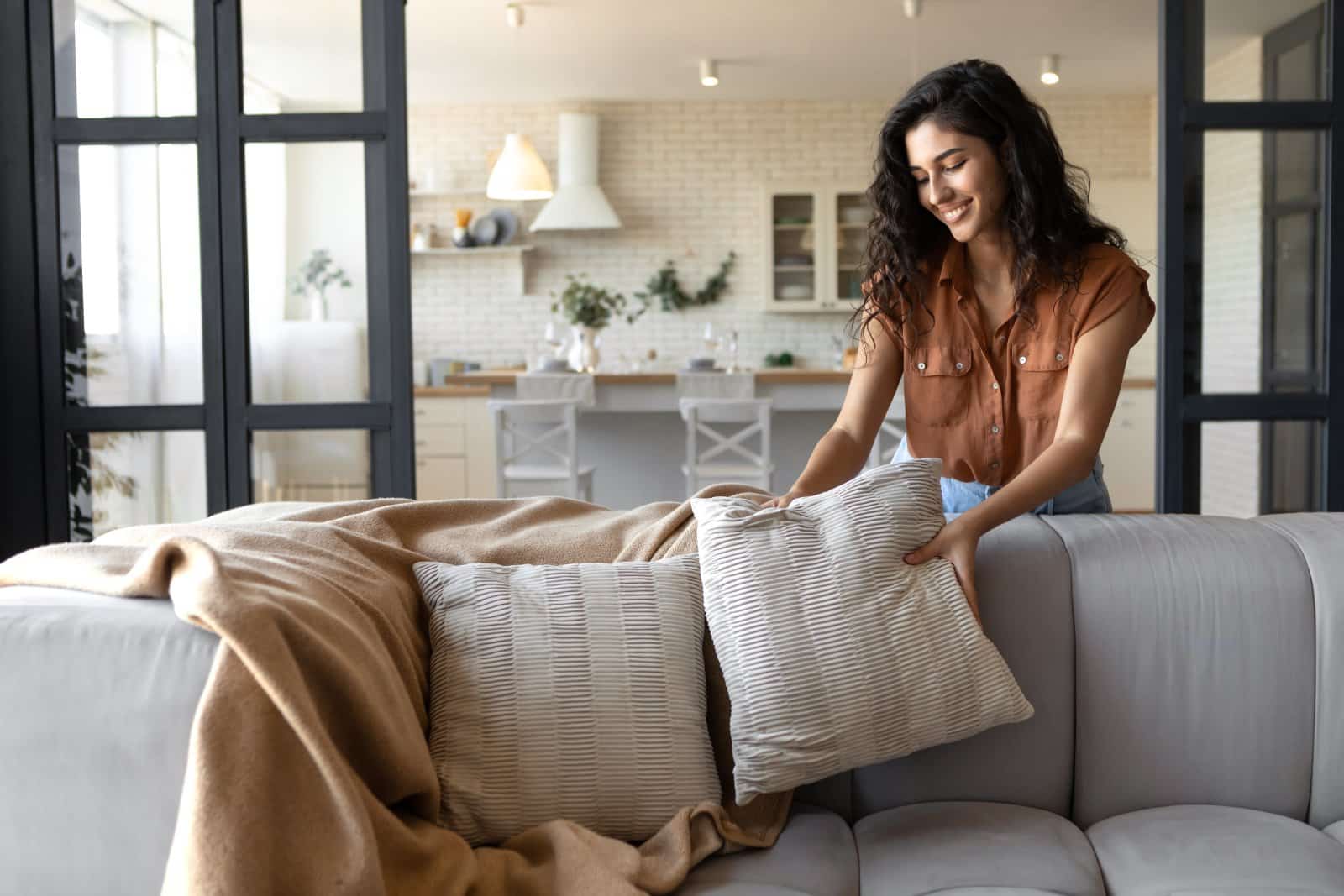Enhance your well-being and elevate your mood with these scientifically proven interior design tips. From maximizing natural light to incorporating calming colors and personalized touches, discover how simple changes to your home environment can positively impact your mental and emotional health.
Natural Light

Incorporate large windows and skylights to maximize natural light in your space. Natural light has been shown to enhance mood and productivity while reducing feelings of stress and fatigue. Research suggests that exposure to natural light can help regulate your body’s internal clock and improve your overall well-being.
Biophilic Elements

Integrate biophilic design elements such as indoor plants, natural materials like wood and stone, and water features into your home. Studies have found that connecting with nature indoors can reduce stress, increase creativity, and improve cognitive function.
Soft Textures

Use soft textures like plush rugs, cozy blankets, and velvet upholstery to create a warm and inviting atmosphere. Soft textures can evoke feelings of comfort and security, promoting relaxation and positive emotions.
Calming Colors

Choose calming colors such as soft blues, greens, and neutrals to promote a sense of tranquility and serenity. Research suggests that certain colors can impact mood and emotions, with cool tones often associated with feelings of calmness and relaxation.
Decluttered Spaces

Keep your home organized and clutter-free to promote a sense of calm and clarity. Clutter has been linked to increased stress and anxiety, while an organized environment can help foster a sense of control and well-being.
Personalized Touches

Incorporate personalized touches such as family photos, artwork, and sentimental objects to make your space feel uniquely yours. Surrounding yourself with meaningful items can evoke positive memories and emotions, boosting your mood and overall happiness.
Aromatherapy

Use essential oils and diffusers to infuse your home with calming scents like lavender, chamomile, and eucalyptus. Aromatherapy has been shown to reduce stress, improve sleep quality, and enhance mood, making it a valuable addition to any mood-boosting interior design scheme.
Comfortable Seating

Invest in comfortable seating options like plush sofas, ergonomic chairs, and cozy reading nooks to create inviting spaces for relaxation and unwinding. Comfortable seating encourages you to linger and enjoy your surroundings, promoting feelings of contentment and well-being.
Soft Lighting

Incorporate soft, diffused lighting with dimmer switches and layered lighting fixtures to create a cozy and inviting ambiance. Soft lighting can help reduce eye strain, promote relaxation, and create a warm and welcoming atmosphere.
Wellness Spaces

Designate specific areas in your home for wellness activities such as yoga, meditation, and mindfulness practices. Creating dedicated wellness spaces encourages self-care and relaxation, helping to improve your mood and overall mental well-being.
Mood-Boosting Interiors

By incorporating these mood-boosting interior design ideas into your home, you can create a sanctuary that promotes relaxation, happiness, and well-being. So, take inspiration from nature, embrace comfort and personalization, and design a space that nourishes your mind, body, and soul.
More From Elpasony
Tapas Tales: Embark on a Flavor-Filled Spanish Adventure
19 Easy and Healthy Toddler Snacks You Haven’t Tried Yet
Indulge Your Culinary Wanderlust: 15 Foodie Paradises for Every Palate
The post Create Your Happy Place: 10 Interior Design Ideas Scientifically Proven to Boost Your Mood first appeared on elpasoNY.com.
Featured Image Credit: Shutterstock / ViDI Studio.
For transparency, this content was partly developed with AI assistance and carefully curated by an experienced editor to be informative and ensure accuracy.

